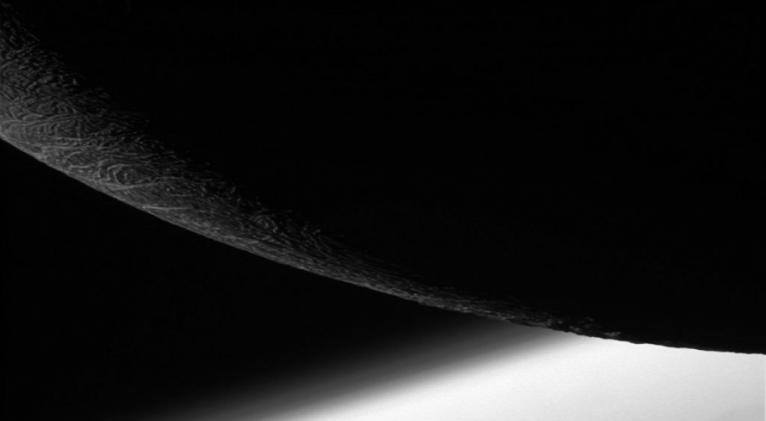'Sadness & triumph': Cassini spacecraft’s last close flyby of Saturn moon Enceladus (PHOTOS)

Cassini passed Enceladus at a distance of 3,106 miles (4,999km) on December 19, snapping stunning photos of the moon.
The images, transmitted by the spacecraft and released by NASA, show three views from Cassini – one as it peered out over the moon's northern territory, another that focused on the icy moon's craggy, dimly lit limb, with the planet Saturn beyond, and a third photo showing the nearly parallel furrows and ridges of the feature named Samarkand Sulci.

The flyby was Cassini's final close encounter with Enceladus – a fact that brings “both sadness and triumph,” according to Earl Maize, Cassini project manager at NASA's Jet Propulsion Laboratory.
"While we're sad to have the close flybys behind us, we've placed the capstone on an incredible decade of investigating one of the most intriguing bodies in the solar system,” Maize said in a press release.
Cassini will, however, continue to monitor Enceladus from a distance, until the end of its mission in September 2017. The future encounters will be more than four times farther than the latest flyby, at its closest point.

The mission has proved to be incredibly successful, with Cassini discovering geologic activity on the moon in 2005, shortly after arriving at Saturn. This led to changes in the flight plan, in order to maximize the number of quality flybys of Enceladus.
Since the initial finding, Cassini has made a number of additional discoveries about the material pouring out of warm fractures near its south pole. The spacecraft's observations prompted scientists to announce strong evidence for a regional subsurface sea in 2014. They revised their understanding in 2015, confirming that the moon hosts a global ocean beneath its icy crust.
As a result of Cassini's findings, Enceladus is now considered one of the solar system's top spots to search for alien life.













Add new comment